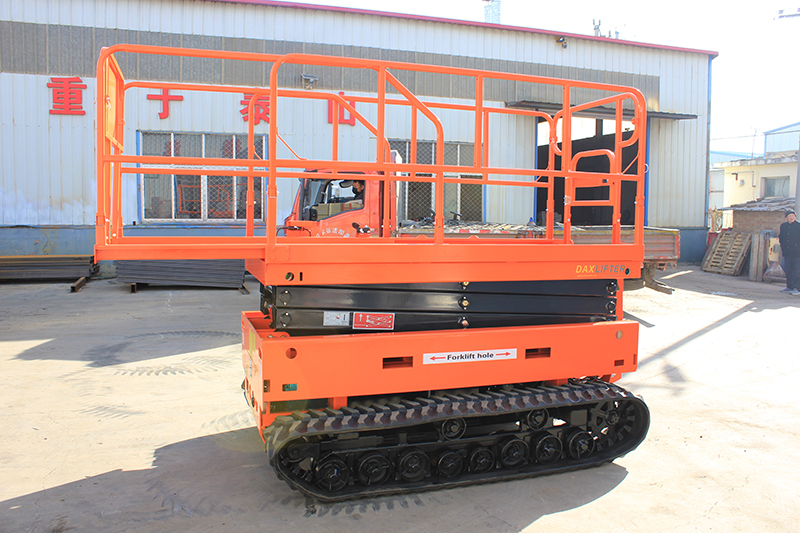Yes, with proper precautions under controlled conditions.
Safe Operation Requirements for Tile Floors:
The tiles must be industrial-grade with proper substrate bonding
Weight distribution systems must be implemented
Operators must maintain slow, controlled movements with gradual stops
Platform loading must not exceed 50% of rated capacity (recommended ≤ 200kg)
Example Scenario:
Automotive showrooms with 12mm-thick ceramic tiles over reinforced concrete can safely accommodate lifts when using wheel path protection and trained operators.
Tile Damage Risk Factors
Common causes of tile failure:
Substandard tile specifications (thin, aged, or improperly cured materials)
Unprotected direct wheel contact creating >100 psi point loads
Dynamic operational stresses (rapid directional changes or elevation adjustments)
Excessive combined weight (machine + load exceeding surface rating)
Documented Incident:
Multiple dealerships reported tile fractures when operating 1,800kg lifts without surface protection at trade shows.
Why Tile Surfaces Are Particularly Vulnerable
Concentrated Load Characteristics:
Base machine weight: 1,200–2,500kg
Contact pressure: 85-120 psi (unprotected)
Operational Dynamics:
Stowed speed: 0.97 m/s (3.5 km/h)
Elevated speed: 0.22 m/s (0.8 km/h)
Lateral forces increase exponentially during maneuvers
Unsuitable Surfaces for Standard Scissor Lifts
Prohibited terrain types:
Uncompacted earth
Vegetated areas
Loose aggregate surfaces
Hazards include:
Progressive surface deformation
Hydraulic instability risks
Potential tip-over scenarios
Alternative Solution:
The DAXLIFTER Rough Terrain series with four-wheel drive and specially made for outdoor surfaces.
Post time: Aug-16-2025

